
Through our Underground Explorers Program, we collaborate with researchers and local communities to map mycorrhizal fungal networks in their home ecosystems.

play video
apply for an Underground explorers grant
Applications are currently closed. Please check back soon.

Influence of biochar and biochar-fertilizer applications on Indigenous Arbuscular Mycorrhizal fungi diversity, Phosphorus solubilization and Maize growth in Kwale and Embu Counties in Kenya
Kwale County and Embu County (Eastern slopes of Mt. Kenya)
2024

Influence of biochar and biochar-fertilizer applications on Indigenous Arbuscular Mycorrhizal fungi diversity, Phosphorus solubilization and Maize growth in Kwale and Embu Counties in Kenya
Inviolata Lusweti
Kwale County and Embu County (Eastern slopes of Mt. Kenya)
Cohort:
2024
project abstract
Sustaining crop productivity in Africa is a major challenge given that the cropping systems rely on external low organic and/or inorganic inputs with continuous cultivation, leading to soil nutrient mining. Soil degradation is a distinctive feature affecting most poor households in rural Africa and its numerous consequences are a global concern, but the impact on African smallholders is a pressing matter and it is considered a major limiting factor for achieving household food sufficiency in most tropical and sub-tropical agricultural systems. Out of the major plant nutrients (N, P, K), most cultivated soils in the global South are P deficient, and this scenario is worsened under the P-fixing acidic soils with high Aluminium and Iron concentrations especially in ferralsols and humic nitisols. P inadequacy is a challenge to a sustainable farming system in Kenya hindering the quest to improve food production for an increasing population. Biochar has been suggested as a promising & a more sustainable organic approach soil amendment. Arbuscular Mycorrhiza Fungi (AMF) symbiosis, on the other hand, is associated with increased phosphorus uptake and also enhancing P supply to acidic soils where phosphorus is mainly bound with Fe, Al or Ca. Maize (Zea mays L.) is an important food crop, especially in the sub-Saharan Africa and statistics show that more land in Kenya is being used for (small-scale) maize production to meet future food demands. P and N deficiencies in Kenyan soils result in a 50% and 43% reduction in maize yield, respectively, and hence, maize production trend has not kept pace with the annual population growth rate.
This research aims at establishing the processes through which biochar applications in low P soils would improve maize yields by smallholder farmers in coastal semi-arid and highland areas in Kenya by utilizing soil-mycobiome pathways. Specifically, we will Isolate, screen, and identify the Indigenous AMF species from Control, Biochar and Biochar- fertilizer treated soils and then we will investigate the variations in soil P fractions caused by Indigenous AMF, Biochar and Biochar- fertilizer treatments in both sites. To achieve this, the project will adhere to the SPUN sample collection guidelines and employ advanced molecular techniques, such as metabarcoding of the rDNA region.
Utilizing biochar-mycobime-plant pathway(s) of P transformations for P Acquisition Efficiency (PAE) by diversity of indigenous AMF species and making use of indigenous AMF would be the most effective and sustainable alternative method of improving P nutrition in soils in maize cropping system thereby ensuring delivery on maximum maize productivity goals. Equally, knowledge that would be gathered after understanding how biochar influences root colonization of indigenous AMF diversity in maize cropping system & how AMF enhances P availability in soils, will be used to develop a product/technology for use by smallholder farmers who are constantly experiencing low maize productivity, to enhance their maize yields through use of cheaper and sustainable methods of production. Local collaborators in the project will include various stakeholders such as smallholder farmers, agricultural extension officers, researchers from local universities or agricultural institutions, and community-based organizations. These local collaborators will benefit by gaining insights into the types of indigenous AMF present in their soils and understanding how specific AMF species can help optimize agricultural practices, such as crop selection, fertilizer management, and irrigation strategies, leading to improved crop yields and overall farm productivity. Ultimately, it will be important to establish alternative fertilization methods using organic sources for promoting sustainable agriculture in Kenya, due to economic and ecological effects caused by excessive use of inorganic fertilizers in the wake of climate change.
Photo by David Clode on Unsplash

Belowground soil microorganism’s biodiversity study in Mount Mabu (Mozambique) by using high-throughput sequencing technology (BeMaSeq)
MOUNT MABU, MOZAMBIQUE
2022

Belowground soil microorganism’s biodiversity study in Mount Mabu (Mozambique) by using high-throughput sequencing technology (BeMaSeq)
Iris Victorino
MOUNT MABU, MOZAMBIQUE
Cohort:
2022
project abstract
Tropical forest ecosystems retain the highest levels of biodiversity, fact that makes them great contributors to Earth’s total biodiversity. Mount Mabu is a mountain located in the north of Mozambique of approximately 1700 meters covering roughly more than 7000 hectares. It is estimated that mount Mabu is the largest medium-altitude rain forest in Africa, encompassing diverse wildlife, unknown to scientists. To date, only the vegetation of the lower slopes in the south-eastern has been described – woodland, forest, and scrub/sedge patches on bare rock, remaining the rest unknown. The mycorrhizal fungi, a very important group of soil microorganisms, are present in many habitats but knowledge regarding their presence in tropical regions is still scarce. Their community structures is diverse between mountains at different altitudes, especially in tropical rainforests, so, it is expected that mount Mabu, as an unexplored forest, could represent a hotspot for many species including soil microorganisms such as the mycorrhizal fungi. To address this, sampling, collaborative efforts and use of molecular methodologies are encouraged. Our project intend to sample and isolate AMF using morphological and molecular techniques and lastly attempt to cultivate it in laboratory.
Image: Conradie W, Bittencourt-Silva GB, Engelbrecht HM, Loader SP, Menegon M, Nanvonamuquitxo C, Scott M, Tolley KA (2016) Exploration into the hidden world of Mozambique’s sky island forests: new discoveries of reptiles and amphibians. Zoosystematics and Evolution 92(2): 163-180.
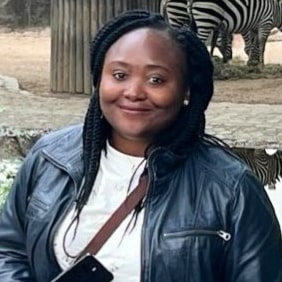
Mycorrhizal fungi composition in an Afromontane forest ecosystem
Nigeria
2025

Mycorrhizal fungi composition in an Afromontane forest ecosystem
Iveren Abiem
Nigeria
Cohort:
2025
project abstract
The study will investigate the diversity and community composition of mycorrhizal fungi in Ngel Nyaki, an Afromontane forest in southeastern Nigeria. Montane forests comprise only 8% of Africa’s forest cover but have substantial biodiversity and provide numerous ecosystem services. The aim of this study is to assess the mycorrhizal fungal communities in this relatively drier, colder, and less diverse ecosystem compared to lowland tropical forests. We hypothesize that (1) mycorrhizal fungal diversity will be lower than in lowland forests, (2) arbuscular mycorrhizal associations will dominate, and (3) diversity will decline near the forest edge due to increased soil dryness. DNA will be extracted from the soil and the ITS2 rDNA region will be amplified and sequenced. A detailed assessment of the fungal taxa present will be carried out. By filling a major gap in tropical mycorrhizal research, our study will contribute to the broader understanding of microbial ecology in montane systems and probably, their role in supporting forest resilience under changing environmental conditions.
Photo by Ayoola Salako on Unsplash

A mosaic of the ectomycorrhizal diversity in the biogeographical Chocó region
1) Colombia, departamento del Chocó, municipio de Nuqui, corregimiento Coqui. 2) Colombia, departamento del Chocó, municipio de Capurgana
2023

A mosaic of the ectomycorrhizal diversity in the biogeographical Chocó region
Jaime Andrés Duque Barbosa
1) Colombia, departamento del Chocó, municipio de Nuqui, corregimiento Coqui. 2) Colombia, departamento del Chocó, municipio de Capurgana
Cohort:
2023
project abstract
The biogeographical Chocó region of Colombia is considered one of the hotspots of global biodiversity; however, it remains an under-sampled area. It is under high threat from several anthropic actions, such as extraction of timber plants without appropriate management plans, mining and the expansion of agricultural borders. For these reasons, it is necessary to increase knowledge of the area that can be used in strategies for conservation plans and the sustainable use of the resources of this region. Our objective is to study ectomycorrhizal fungi at two locations in the Chocó Department; one in the Tropical Moist and Rain Forest of the Nuquí municipality under the climate influences of the Pacific Ocean, and the other in the Tropical Moist Forest of the Capurganá bay under the climate influences of the Caribbean Sea. At both locations, we will work directly with the local communities and the region’s environmental leaders strengthening advocacy for conservation and understanding of the fungal diversity of this biogeographical zone so that the communities can take ownership of their fungal resources and use them appropriately. Additionally, information will be shared for use in future research on biodiversity, systematics, biogeography, ecological restoration, or even as foundation for the discovery of new species.
Photo by Michael Lechner on Unsplash
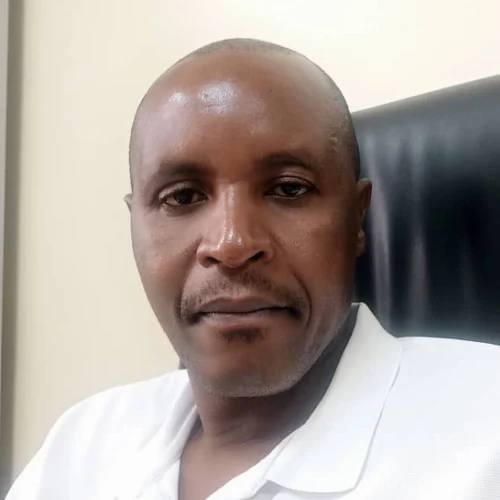
Exploring Arbuscular Mycorrhizal Fungi (AMF) in Forest and Savanna Sites Restored Using an Ecosystem-based Adaptation Approach in Eastern Rwanda
Rwanda
2025

Exploring Arbuscular Mycorrhizal Fungi (AMF) in Forest and Savanna Sites Restored Using an Ecosystem-based Adaptation Approach in Eastern Rwanda
Jean de Dieu Habiyaremye
Rwanda
Cohort:
2025
project abstract
This research project explores the diversity and composition of Arbuscular Mycorrhizal Fungi (AMF) in forest and savanna ecosystems in Eastern Rwanda that have been restored through the Ecosystem-based Adaptation (EbA) approach. A total of 48 soil samples will be collected from two study sites: the Ibanda-Makera forest in Kirehe District and the Nyagatare savanna in Nyagatare District. The Ibanda-Makera site includes three distinct plots representing restored, degraded, and natural forest conditions. In contrast, the Nyagatare savanna site consists of three plots located at varying altitudes. Using high-throughput DNA metabarcoding of the ITS2 region and Illumina MiSeq sequencing, we aim to characterize AMF communities across varied vegetation types and restoration histories. We hypothesize that AMF diversity will vary significantly across Ibanda-Makera plots due to differences in vegetation and land use, while Nyagatare plots will exhibit more similar AMF compositions given their shared vegetation and management. Additionally, we expect AMF differences between restored savanna and restored forest plots. This research will generate essential baseline data on soil fungal biodiversity in Rwanda, inform restoration practices, and contribute to global understanding of AMF diversity, particularly in tropical regions that are often underrepresented in such studies.
Photo by maxime niyomwungeri on Unsplash

Humboldt's legacy on its journey through Ecuador from underground networks: mapping mycorrhizal fungal communities
ECUADOR
2022

Humboldt's legacy on its journey through Ecuador from underground networks: mapping mycorrhizal fungal communities
Jessica Duchicela
ECUADOR
Cohort:
2022
project abstract
Humboldt reported that tropical plant species richness decreased with increasing elevation and decreasing temperature. Tropical regions harbor the majority of the world’s biodiversity, surprisingly, patterns in plant and fungal diversity on tropical mountains have not yet been described. Alexander von Humboldt ascended the Chimborazo, Antisana and Pichincha volcanos in Ecuador. He recorded the distribution of plant species and vegetation zones along its slopes and in surrounding parts of the Andes. We propose to follow the steps of those three Humbold´s expedition, following an Andean transect traversing 3.5 to 5 km in elevation (equivalent to a 6.5°–26.4°C mean annual temperature range) to test whether the soil fungal species, particularity mycorrhiza, diversity and composition follow similar biogeographical patterns with shared environmental drivers. This will be done for the first time in Ecuador. With the help of historical records of Humboldt's Expedition.
Photo by Sane Sodbayar on Unsplash
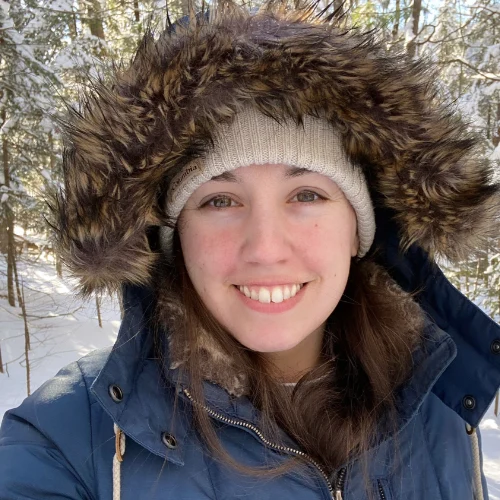
How does accelerating winter climate change reshape tree-mycorrhizal associations in seasonally snow-covered forests?
USA
2025

How does accelerating winter climate change reshape tree-mycorrhizal associations in seasonally snow-covered forests?
Joanna Ridgeway
USA
Cohort:
2025
project abstract
Northeastern United States forests play a key role in the global carbon sink, are projected to shift in forest composition and mycorrhizal association over the next century, and are at the forefront of rapid winter warming. Here, increasingly inconsistent winters drive frequent dry/wet cycles from snowmelt and leave soils vulnerable to freezing without an insulative snowpack. To study how these novel winter soil climate conditions could differentially impact fungal biodiversity, we will leverage a new climate change experiment that melts snow in a New Hampshire forest and an observational gradient ranging from centimeters- to meters-deep snowpack in forests across the region. The snowmelt experiment enables us to isolate the impacts of rapid winter climate change to elucidate how winter warming impacts mycorrhizal fungi. Data from the gradient study will both expand our scope of inference and generate valuable data to inform local conservation or management strategies (e.g. replanting efforts, selective harvesting). As over half of the Northern Hemisphere is characterized by seasonally snowy winters, this research will enhance our ability to predict how changing winters may broadly transform plant-mycorrhizal symbioses.
Photo by Dylan Crawford on Unsplash

Towards revealing soil fungal diversity pattern in Ghana
Ghana
2024

Towards revealing soil fungal diversity pattern in Ghana
John Yangyuoru Kupagme
Ghana
Cohort:
2024
project abstract
The crucial role of soil fungi in ecosystem functioning and biodiversity cannot be overemphasised. Yet, their diversity and distribution patterns still remain unexplored in many parts of Africa, including Ghana. This project aims to explore the diversity of soil fungal communities across different terrestrial biomes in Ghana. Atewa Range Forest Reserves, Bobiri Forest Reserve, and Ankasa Forest Reserve are protected natural reserves located in the Southeastern, Southcentral, and Southwestern parts of Ghana, respectively. We hypothesised that soil fungal diversity will vary significantly across these habitats in Ghana. Using SPUN’s sampling protocol modified from the Silva Nova/SoilBon protocol, we will collect soil samples from these locations and leverage high-throughput sequencing techniques (PacBio) to provide an enhanced comprehension of the intricate fungal communities within these mycobiomes. Some local community members will receive training on soil sampling protocols during this expedition.
The findings from this expedition will be of significant value to both the local communities under study and the world at large as fungal community composition within these biomes will be revealed alongside the drivers of these diversity patterns. This investigation will also serve as a baseline for several endemic and potentially novel fungal species, which will underscore the rich yet underexplored fungal biodiversity in Ghanaian soils. These findings will also be important for understanding ecosystem health at large, as well as informed conservation strategies and enhanced sustainable land management practices against climate change.
Photo by Alfred Quartey on Unsplash

Unearthing mycorrhizal diversity across a degradation gradient in the western shortgrass prairies
Western Shortgrass Prairie
2024

Unearthing mycorrhizal diversity across a degradation gradient in the western shortgrass prairies
Jonathan Henn
Western Shortgrass Prairie
Cohort:
2024
project abstract
Grassland restoration is a growing practice throughout the world but we are rarely able to achieve plant community structure and diversity that mimic old growth grasslands. In fact, identifying and defining old growth grasslands is under debate. An ancient soil structure that hosts diverse microbial and fungal communities may be a hallmark of old growth grasslands which host high plant diversity and complex structure. The homogenization of soil structure may be one important limitation to grassland restoration because the simplified underground environment may not host a diverse belowground community and many “high quality” grassland plants rely on specialized mycorrhizal interactions more so than widespread weedy species. By better understanding how mycorrhizal diversity varies across remnant, agricultural, and restored grasslands, we will be able to understand whether old growth grasslands have unique belowground communities and whether restoration can increase soil community diversity and to what extent this relates to plant species diversity. This will aid in identifying old growth grasslands in places where management history is uncertain, providing evidence to back conservation of high quality ecosystems. These results could also guide decisions around potential soil inoculation throughout the restoration process to help build diverse soil communities.
Photo by Braden Collum on Unsplash

The Grass is Always Greener: Exploring the Dominant Grass Microbiomes of the North American Great Plains
Colorado, United States, Kansas, United States, Wyoming, United States
2023

The Grass is Always Greener: Exploring the Dominant Grass Microbiomes of the North American Great Plains
Jordan Alexander Siggers
Colorado, United States, Kansas, United States, Wyoming, United States
Cohort:
2023
project abstract
The North American Great Plains are composed of vast expanses of shortgrass, mixed, and tallgrass prairies. Each system is dominated by unique plant species, such as Andropogon gerardii and Bouteloua gracilis. Associations with arbuscular mycorrhizal fungi play an essential role in maintaining plant dominance in these systems, but the distribution of AMF across this major carbon sink is not well known. With the increasing frequency and severity of extreme climatic events, such as drought, it is critical to understand how these events alter plant-fungal associations across the Great Plains. Hence, we will leverage a network of recently decommissioned precipitation manipulation experiments to investigate the potential legacy effects of drought on plant and fungal communities. We seek to gain insight into the distribution of dominant AMF genera, along with an understanding of how drought of differing intensities influences long-term fungal community composition. We will partner with local nonprofit organizations to meet with community members, discuss the importance of mycorrhizal fungi in provisioning ecosystem services, and train individuals to investigate the fungal diversity around them.
Photo by Raychel Sanner on Unsplash

Diversity of Arbscular Mycorrhizal Fungal communities across different land uses in semi-arid region of Tanzania
Dodoma, Tanzania
2023

Diversity of Arbscular Mycorrhizal Fungal communities across different land uses in semi-arid region of Tanzania
Joseph Innocent Massawe
Dodoma, Tanzania
Cohort:
2023
project abstract
Arbuscular mycorrhizal fungi (AMF) play a vital role in ecosystem restoration and sustainability. These fungi form symbiotic relationships with plants to improve plant growth, protect the plants against root pathogens and environmental stress, and promote ecosystem stability. Therefore, understanding AMF diversity will be very important for land use management practice and conservation, especially in semi-arid regions. This project will focus on determining the diversity of AMF fungi in the semi-arid region of Dodoma, Tanzania, by comparing three sites: a natural forest reserve, a tree plantation, and grazing grassland. The AMF will be identified on 30 samples using the ITS region of the DNA and high-throughput sequencing technique using the Illumina platform. The data obtained from this study will not only provide insight on how different land use influences AMF diversity but also contribute to the conservation and management of these ecosystems, ultimately fostering ecological resilience.

Integrating mycorrhizal approaches into the conservation and restoration of the sacred kaya Kauma forest fragments and the environs
Kenya
2023

Integrating mycorrhizal approaches into the conservation and restoration of the sacred kaya Kauma forest fragments and the environs
Joyce Jefwa
Kenya
Cohort:
2023
project abstract
The area of study is the UNESCO heritage sacred Kaya Kauma and Kaya Chivara forest fragments within the Coastal region of Kenya (38.5° E and 41.5° E lies between 0° and 5° S), at 300m above sea level. The area experiences low and unpredictable rainfall with frequent severe droughts. The area is characterised by a variety of soil types and minerals. The two sacred forest fragments, 10.7 km apart, were once a continuous forest landscape stretch. It is intercepted by farmlands and settlements, rill and deep gulley erosion. The plant communities form association with ecto-mycorrhizal and arbuscular mycorrhizal. Tree planting is a common activity in the region with limited evidence of success. Root symbionts are overlooked in tree establishments, and yet the relationship may range from facultative to obligate. The integration of mycorrhizal association into the nursery management of seedlings is important for survival and subsequent establishment of tree seedlings. The use of native mycorrhiza may guarantee more success.
A total of 24 soil samples and ectomycorrhizal fruit bodies will be collected from distinct points. The samples and specimens will be transferred to the laboratory for characterization of both Ecto- and Arbuscular- mycorrhiza species and mineral analysis. Morphological and molecular methods involving DNA extraction and nested PCR amplification, will be used for the identification. A mycorrhizal inoculum potential assessment will be conducted using the Most Probable Number (MPN) method. An awareness creation will be undertaken to explain to the community nursery groups the role of mycorrhiza in ecosystem functions and plant nursery management. A semi-structured questionnaire will be used to evaluate management of seedlings. The mycorrhizal status of seedlings from four nurseries will be inoculated and planted near the sacred forest degraded landscape. Community members and school children will be selected to participate in laboratory observation of mycorrhizal fungi.
Photo by Wendy Brooks on Unsplash
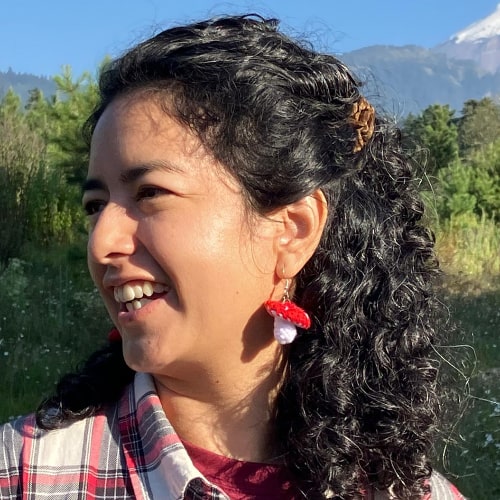
Hongos ectomicorrízicos de los bosques tropicales de El Salvador y la península de Yucatán
El Salvador
2025

Hongos ectomicorrízicos de los bosques tropicales de El Salvador y la península de Yucatán
Julieta Alvarez-Manjarrez
El Salvador
Cohort:
2025
project abstract
Our project aims to explore the ectomycorrhizal fungal diversity from Yucatan Peninsula and El Salvador. Yucatan has been considered as one of the high endemic places around the globe and we want to sample all their different ecosystems to have better picture of what is leading to this incredible diversity. On the other hand, there are similar ecosystems in El Salvador but this country has been studied very scarcely, so this study will be the first on its type to describe its diversity and then compare it with data we have from other Neotropical places.
Photo by Alejandro Alas on Unsplash

Characterisation of Arbuscular Mycorriza and Determination of Their Effect on Soil Nutrient and Growth Potential of Baobab
Mangochi, Karonga and Salima districts, Malawi
2024

Characterisation of Arbuscular Mycorriza and Determination of Their Effect on Soil Nutrient and Growth Potential of Baobab
Kennedy Masamba
Mangochi, Karonga and Salima districts, Malawi
Cohort:
2024
project abstract
Despite the important ecological functions played by arbuscular mycorrhizal fungi (AMF), few studies have been conducted on AMF associated with plant species particularly baobab in Malawi. Furthermore, the ecology under-which baobab thrives support limited number of tree species. This proposed study therefore seeks to explore the possible role of AMF on growth and establishment of baobab species within the selected ecological sites. The study will be conducted in Malawi in the following districts: Mangochi, Karonga and Salima. The study will comprise field soil sampling that will be done in collaboration with local communities followed by laboratory work. Field soil sampling will follow SPUNs standardized protocols and it is anticipated that atleast 30 soil samples will be collected. Laboratory work will involve DNA extraction, quantification, amplification as well as visualization of PCR products will locally be visualized using gel electrophoresis. Additionally, DNA will be sent to external laboratory for deep sequencing using oxford nanopore sequencing platform. The study will elucidate the genetic diversity of AMF associated with baobab and hence contribute towards biodiversity conservation strategies. Furthermore, the study will create awareness on the roles of AMF on baobab species and contributes towards the global science on AMF through publications and video clips.
Photo by Omar Hakeem on Unsplash

Unveiling mycorrhizal associations of endemic species and native plant communities in Seychelles’ unique ecosystems
Seychelles
2024

Unveiling mycorrhizal associations of endemic species and native plant communities in Seychelles’ unique ecosystems
Laura Montano
Seychelles
Cohort:
2024
project abstract
The Seychelles is an archipelago comprising several unique and ecologically significant sites: Vallée de Mai on Praslin, home to the world’s largest intact coco de mer forest and five other endemic palm species; Aldabra Atoll, one of the world’s largest raised coral atolls with significant mangrove forests and seabird colonies; and Mahé, where the critically endangered jellyfish tree can be found. However, there is limited data on mycorrhiza in the soils of these ecosystems. Soil samples will be collected and analysed using metabarcoding, in collaboration with the University of Oxford, to investigate mycorrhizal associations in these key endemic plant species to understand their role in nutrient uptake and ecosystem dynamics. Specifically, this project aims to assess: a) mycorrhizal associations and their contribution to nutrient uptake in coco de mer trees that thrive in nutrient-poor soils; b) mycorrhizal associations with mangrove and terrestrial plants in seabird nutrient-enriched areas on Aldabra; and c) mycorrhizal associations with the jellyfish tree and their role in nutrient uptake.
Photo by Michaela Římáková on Unsplash
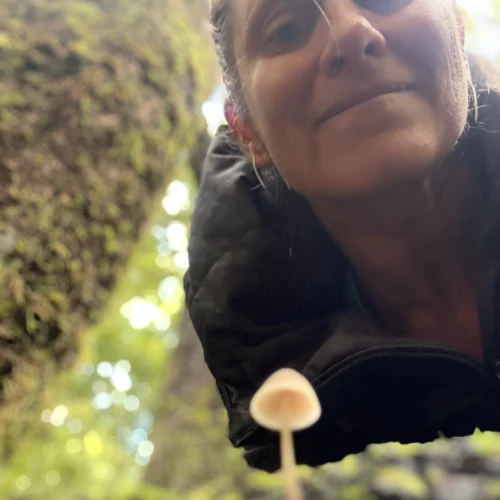
Are New Zealand farmers supporting mycorrhizal fungal abundance and diversity through mixed-species rotational grazing practices?
New Zealand
2025

Are New Zealand farmers supporting mycorrhizal fungal abundance and diversity through mixed-species rotational grazing practices?
Lauren Waller
New Zealand
Cohort:
2025
project abstract
Pastoral agriculture, especially when performed intensively and indiscriminitely, can diminish fungal communities through reductions in plant biomass and diversity. In contrast, mixed-species rotational grazing, a common practice on many New Zealand high country stations, can increase fungal diversity and abundance. By grazing species with different feeding preferences at different times, this approach can increase plant diversity and consequently support more fungi. This study will evaluate how this grazing practice influences fungal biomass, diversity, and species interaction network properties through it’s effects on plant community composition.
Photo by Scott Martin on Unsplash

Plant-Microbial Interactions in Miombo Woodlands
Zambia
2023

Plant-Microbial Interactions in Miombo Woodlands
Likulunga Emmanuel Likulunga
Zambia
Cohort:
2023
project abstract
The Miombo woodlands are tropical seasonal woodlands with extensive distribution in Africa, dominated by plant species belonging to the genera of Brachystegia, Isoberlinia and Julbernardia. The Miombo woodlands are economically important for timber production, firewood collection and provision of non-timber forest products among others. The Miombo woodlands are also significant for nutrient cycling due to their capability of forming symbiotic associations with microbes such as fungi. While microbes such as fungi are imperative for mediating ecosystem functions, the diversity and composition of these microbes in Miombo woodlands are poorly understood due to little or no knowledge availability. Further anthropogenic activities such as deforestation, coupled with global climate change, are threats to forest ecosystems with Miombo woodlands inclusive. Therefore, in our project we will explore soil and root associated fungal diversity and composition through fungal DNA barcoding in Miombo woodlands, integrating sites (unexplored for microbes) in Zambia showing variation in abiotic factors (e.g. climatic conditions and soil nutrient availability). The knowledge from this project will provide a better understanding on the interaction of Miombo woodland species with microbes, thereby contributing to sustainable management of these woodlands.

The roles of soil fungi and plant-mycorrhiza associations in stabilizing the Colombian treeline
Cundinamarca, Colombia
2023

The roles of soil fungi and plant-mycorrhiza associations in stabilizing the Colombian treeline
Lina Marcela Aragón Baquero
Cundinamarca, Colombia
Cohort:
2023
project abstract
We aim to understand the role that soil fungi and plant-mycorrhiza associations play in the stabilization of treeline in the Colombian Eastern Andes Cordillera. The ability of trees from high Andean forests to “migrate” and track suitable temperatures in a warming world may be limited by the absence of the right soil microorganisms and highly specific plant-mycorrhiza associations at higher elevations. To understand the role that each of these two factors plays in determining and stabilizing treeline, we will visit 10 sites around Bogotá city and, in each of them, collect soil and root samples along 3 transects spanning an altitudinal gradient from the High Andean Forest (~3,000 masl) into the Páramo (~3,400 masl) ecoregion. The high Andean Forest and the Páramo ecoregions are biodiversity hotspots severely threatened by climate change and pressures of multiple human activities such as agriculture, cattle farming, and urban development. These tropical montane ecosystems are also highly important as above- and below-ground carbon stocks and may serve as future “carbon refuges” if adequately preserved (Duque et al. 2021). Thanks to SPUN support, we will unveil if the absence of the right microorganisms in the soil will put the few remnants of the High Andean Forest in Colombia more at risk.
Photo by Niels van Altena on Unsplash

The role of Mycorrhizal fungi in Gazi's Community Managed Mangroves; a nature based solution to climate change adaptation
Kenya
2025

The role of Mycorrhizal fungi in Gazi's Community Managed Mangroves; a nature based solution to climate change adaptation
Linet Kiteresi
Kenya
Cohort:
2025
project abstract
Gazi Bay, located on Kenya’s southern coast, is a vital coastal ecosystem known for its extensive mangrove forests, seagrass meadows, and coral reefs. Home to all nine mangrove species found in Kenya, the area has been the focus of long-term conservation efforts and carbon monitoring initiatives. As a significant blue carbon sink, the mangroves provide ecological protection and socioeconomic benefits to local communities, including through carbon credit sales. Despite this, limited research has explored the role of Arbuscular Mycorrhizal Fungi (AMF) and Ectomycorrhizae (ECM) in carbon sequestration within these mangroves. This project aims to enhance understanding of AMF and ECM diversity and their contribution to carbon storage. Sampling will occur in the Mikoko Pamoja conservation area, and will include disturbed, undisturbed, regenerated, restored zones, in additional to 10 permanent monitoring plots—totaling 42 triplicate samples. By analyzing environmental DNA (eDNA) from sediment cores, the project seeks to reconstruct historical patterns in mycorrhizal community structure and relate them to environmental changes and management interventions. These insights are intended to support effective conservation strategies and reinforce the bay’s role in global blue carbon dynamics.
Photo by David Cashbaugh on Unsplash

Comparative Analysis of Arbuscular Mycorrhizal Fungal Communities Across Diverse Forest types in Tenasserim-South Thailand between Wet and Dry Seasons
Thailand
2025

Comparative Analysis of Arbuscular Mycorrhizal Fungal Communities Across Diverse Forest types in Tenasserim-South Thailand between Wet and Dry Seasons
Lompong Klinnawee
Thailand
Cohort:
2025
project abstract
The Tenasserim region of Southern Thailand represents a critical biogeographical transition zone harboring unique flora and fauna assemblages, yet arbuscular mycorrhizal fungi (AMF) communities across its diverse forest ecosystems remain largely unexplored. This study aims to characterize AMF community composition and diversity across three distinct forest types: lowland evergreen forest, coastal sand dune forest, and mixed forest ecosystems, investigating seasonal variations between wet and dry seasons. Soil samples (n=48) will be collected from four protected areas during July and February, with AMF communities characterized through paired-end amplicon sequencing of the small subunit ribosomal DNA region using the Illumina NovaSeq6000 platform. We hypothesize that AMF community composition differs significantly across forest types, with highest diversity in mixed forests due to heterogeneous environmental conditions, and that seasonal variations significantly influence community structure with greater richness during wet seasons. This research will provide the first comprehensive baseline data on AMF diversity in the Tenasserim region, essential for conservation strategies of mycoheterotrophic plants including rare orchids and endangered species. The identification of native AMF strains will contribute to sustainable agriculture through biofertilizer development while advancing understanding of tropical forest ecology and mycorrhizal biogeography in Southeast Asia.
Photo by Hannah Tims on Unsplash

Study of ectomycorrhizal fungal communities in the miombo woodland in relation to their host trees (Democratic Republic of Congo)
Congo, the Democratic Republic of the
2025

Study of ectomycorrhizal fungal communities in the miombo woodland in relation to their host trees (Democratic Republic of Congo)
Longanga Rachel
Congo, the Democratic Republic of the
Cohort:
2025
project abstract
Despite the importance of ectomycorrhizal associations in facilitating the mineral uptake of poor soils and improving forest productivity, there is very little interest in them in management programs for tropical forest ecosystems in the Haut-Katanga region of the Democratic Republic of Congo, as the diversity of fungi at the origin of these associations is still unknown. This project will shed light on ectomycorrhizal fungal diversity and establish a list of the region's fungi and their host trees. At the end of the research that will be carried out, we expect different fungal communities depending on the type of forest (Miombo, Muhulu, Mushitu) due to different environmental conditions.
Photo by Trésor Kande on Unsplash
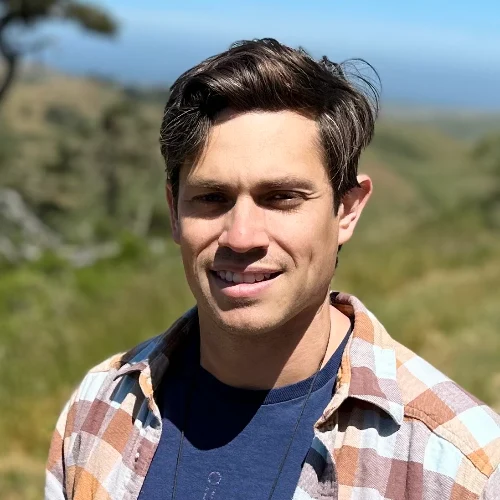
Mapping the role of mycorrhizal fungi in microplastic pollution—a nano-to-landscape scale assessment
USA
2025

Mapping the role of mycorrhizal fungi in microplastic pollution—a nano-to-landscape scale assessment
Louis Berrios
USA
Cohort:
2025
project abstract
A relic of California's past and part of the so-called Galápagos of North America, Santa Cruz Island (SCI) of the Channel Islands is home to diverse flora and fauna that inhabit varied vegetation habitats. Though several studies have investigated the island's aboveground population dynamics, few studies have explored the underground soil microbial communities – and recent reports have shown that the waters surrounding the island are polluted with microplastics, which may disperse via sea spray and endanger plant and soil communities. In light of this information, it is important to determine whether microplastics impact terrestrial plant and soil communities. To this end, our team will sample soils from diverse habitats that span elevational gradients and profile their microplastic and microbial community composition. This study will therefore detail how soil microbial communities change across various abiotic and biotic factors, providing not only a detailed inventory of microbial community responses to microclimate changes but also the first glimpse of microplastic dispersal potential from sea-to-land transitions.
Photo by Mc Jefferson Agloro on Unsplash

From páramos to savannas and sea with mycorrhizal fungi
Cordillera, Páramo, montane forests and llanos – Colombia
2023

From páramos to savannas and sea with mycorrhizal fungi
Luis Daniel Prada Salcedo
Cordillera, Páramo, montane forests and llanos – Colombia
Cohort:
2023
project abstract
This project focuses on Colombia, which ranks as the second most biodiverse country in the world but remains less explored in terms of underground communities. Colombia’s high biodiversity can be attributed to its unique geographic location and topography. This SPUN expedition explores different ecoregions by collecting soil samples in two sampling transects, ranging from highlands (moorlands, 3,000 m.a.s.l) through mid-altitudes, lowlands, and down to sea level. This expedition will encompass various ecoregions: Páramo, montane forests (bosque andino), llanos (tropical savannas), and the Caribbean coast.
The two distinct transects cover diverse environmental conditions and vegetation types that, with the help of different local communities, will enable us to uncover the fungal biodiversity in Colombia. The expedition faces challenges due to the difficult topography, limited routes, and necessary permissions for accessing some locations. However, overcoming these obstacles could lead to the discovery of novel mycorrhizal species and enhance our understanding of ecology and plant-mycorrhizal interactions.
In general, exploring these ecoregions will provide a more precise and realistic representation of underground resources worldwide. Similarly, at the local level, the expedition will empower local communities, stakeholders, and authorities to understand the significance of their natural resources and initiate initiatives for conservation, monitoring, and restoration
Photo by Fernanda Fierro on Unsplash

Investigating the Occurrence and Variability of Arbuscular Mycorrhizal Fungi in the Arid Grasslands of Masai in the Lowlands of Lake Turkana, Kenya.
Lowlands of lake Turkana, Kenya
2023

Investigating the Occurrence and Variability of Arbuscular Mycorrhizal Fungi in the Arid Grasslands of Masai in the Lowlands of Lake Turkana, Kenya.
Lukelysia Nyawira Mwangi
Lowlands of lake Turkana, Kenya
Cohort:
2023
project abstract
My research proposal focuses on investigating the presence and variability of arbuscular mycorrhizal fungi (AMF) within the arid grasslands of Masai, situated in the lowlands of Lake Turkana, Kenya. The area comprises a distinctive ecological zone characterized by vast expanses of open grassy terrain and minimal tree cover. The average temperatures in the region can soar above 30°C (86°F) during the hottest months, with occasional peaks reaching even higher. Rainfall in this arid environment is sparse, often falling below 300mm, resulting in limited vegetation and water resources. The grasslands are inhabited by a range of hardy plant species adapted to arid conditions, and they provide vital grazing grounds for indigenous wildlife, including herbivores and migratory species. The region's unique climate and topography create an environment where mycorrhizal fungi could play a crucial role in supporting plants' health and productivity, making it an intriguing focal point for ecological research.
This study aims to quantitatively assess AMF species, compare their community composition across diverse geographical sites and habitats, evaluate their impact on plant productivity, and identify key factors influencing AMF community distribution. Employing a combination of soil sampling, DNA extraction, PCR, sequencing, statistical analysis, and mapping.
Photo by Damian Patkowski on Unsplash
n/a
Tunisia
2025

n/a
Mahmoud Gargouri
Tunisia
Cohort:
2025
project abstract
n/a

Unraveling Soil Fungal Communities in the Western Ghats, India: Conservation Implications and Future Directions
Western ghats, India
2023

Unraveling Soil Fungal Communities in the Western Ghats, India: Conservation Implications and Future Directions
Manikandan Ariyan
Western ghats, India
Cohort:
2023
project abstract
The Western Ghats of India are of tremendous global importance for biodiversity protection and are areas of significant geological, cultural, and aesthetic worth. It is a mountain range that runs parallel to the western coast of India, stretching approximately 1,600 kilometers (990 miles) from Gujarat in the north to Tamil Nadu and Kerala in the south. The Western Ghats mountain system, which is older than the Himalayas, contains geomorphic features of tremendous importance and distinct biophysical and biological processes. The high mountain forest ecosystems at the site impact the Indian monsoon weather pattern. The site, which moderates the region's tropical climate, is one of the outstanding examples of the world's monsoon system. It also boasts a high level of biological diversity and endemism and is considered one of the world's eight 'hottest hotspots' of biological diversity. The site's woodlands contain some of the best examples of non-equatorial tropical evergreen forests and at least 325 species of globally threatened flora, fauna, bird, amphibians, reptile, and fish. Metabarcoding approaches will enable a comprehensive assessment of the soil fungal communities in the Western Ghats, India, allowing for unraveling the intricate and diverse fungal assemblages in this region. The findings will demonstrate significant associations between soil fungal diversity and environmental variables, highlighting the impact of factors such as altitude, land use practices, and soil characteristics on fungal community composition. This research will contribute to the conservation implications and future directions for protecting the unique fungal diversity of the Western Ghats, aiding in the development of effective conservation strategies for this under-explored region.
Photo by Smaran Alva on Unsplash

Diversity of arbuscular mycorrhizal fungi in agroecosystems established in Andisol soils of Caldas, Colombia
Departamento de Caldas, Colombia
2024

Diversity of arbuscular mycorrhizal fungi in agroecosystems established in Andisol soils of Caldas, Colombia
Marcelo Betancur Agudelo
Departamento de Caldas, Colombia
Cohort:
2024
project abstract
The project Diversity of arbuscular mycorrhizal fungi in agroecosystems established in Andisol soils of the department of Caldas, Colombia, explores soils from coffee farms in three municipalities with volcanic soils; Working together with the coffee growers who own the farms and university students, it is expected, in addition to knowing the diversity of mycorrhizae with metabarcording techniques, it is expected to see how AMF can relate to the availability of phosphorus in these agroecosystems, which are known for their high fixation and high expenses on fertilizer inputs.

How are mycorrhizae communities distributed in the mangrove, restinga, and forest on Santa Catarina Island?
Atlantic Forest, Florianópolis, Southern Brazil
2023

How are mycorrhizae communities distributed in the mangrove, restinga, and forest on Santa Catarina Island?
Maria Alice Neves
Atlantic Forest, Florianópolis, Southern Brazil
Cohort:
2023
project abstract
Santa Catarina Island, in southern Brazil, is covered with Atlantic Forest and has mangroves and restinga that act as buffers between the ocean and rainforest. The goals of this project are to understand how many taxa of mycorrhizal fungi are shared between the restinga and forest and to investigate the presence of mycorrhizae in the mangroves. Several woody species grow in the harsh conditions of the restinga, and a few of these also grow in the adjacent forest. These plants often have different habits, such as shrubs in the restinga and tall trees in the forest. Mangroves have their own distinct flora with species that are mostly restricted to this environment. We propose two hypotheses: 1) the community of ectomycorrhizal fungi in the restinga soil is similar to that in the forest; and 2) the diversity of ectomycorrhizal fungi in the mangroves is low. The mangroves and restinga are threatened due to climate change and real estate development. Another problem on the island is the spread of exotic Pinus and Eucalyptus species that were introduced. It is unknown how the local fungi communities are affected by the exotic fungi that were introduced with these plants. Knowing the soil fungal communities will allow us to better understand the effects of the invasive species on native plants and to select potential native taxa to be used in restoration projects.
We will promote events open to the public so local communities and students can be involved. For example, the Rick Foray and EctoSul will include field expeditions and talks that emphasize the importance of fungi in the soil. We will also teach participants how to look for ectomycorrhizal mushrooms and recognize and collect ectomycorrhizae in the field, as well as show them root tips with mycorrhizae using dissecting microscopes.

DIVERSIDAD DE HONGOS FORMADORES DE MICORRIZAS ARBUSCULARES EN LOS BOSQUES DE CALDÉN PRESENTES EN EL ESPINAL DE LA PAMPA, ARGENTINA.
La Pampa, Argentina
2023

DIVERSIDAD DE HONGOS FORMADORES DE MICORRIZAS ARBUSCULARES EN LOS BOSQUES DE CALDÉN PRESENTES EN EL ESPINAL DE LA PAMPA, ARGENTINA.
Mariela Lis Ambrosino
La Pampa, Argentina
Cohort:
2023
project abstract
In Argentina, the Espinal is characterized by the presence of deciduous xerophytic forests that rarely exceed 10 meters in height. Within this ecoregion, the Caldén District is constituted of an open forest where the dominant species is Neltuma caldenia (Burkart) C.E. Hughes & G.P. Lewis (caldén). More than 90 endemic plant species and 50 species of medicinal plants are part of this unique ecosystem in the world. Over the last 150 years, there has been an increase in shrub cover in different areas. Extensive cattle grazing with high pressure, forest fires, tree felling, and climate change are associated with vegetation cover loss, soil erosion, and aridification processes. Different management practices are performed in La Pampa to restore the caldén forests, recover their biodiversity, and their potential as providers of ecosystem services.
The study of arbuscular mycorrhizal fungi diversity will contribute to understanding the ecological role of these microorganisms in the restoration of degraded areas. Additionally, it will allow the establishment of relationships between fungi and caldenal plant species, enhancing the integration of mycotrophic plants and contributing to the development and survival of plant species in these semiarid environments.
Photo by Luciano Oldecop on Unsplash

Understanding symbiotic interactions for agroecosystems ecological intensification and restoration of Pampean landscapes
Pampa region, Argentina
2023

Understanding symbiotic interactions for agroecosystems ecological intensification and restoration of Pampean landscapes
Marina Omacini
Pampa region, Argentina
Cohort:
2023
project abstract
Pampa grasslands originally covered nearly 400,000 square kilometers of fertile plains in Argentina, and today are deeply reduced and threatened by agriculture, fragmentation and invasive plants. Understanding the impact of current activities on the soil biota is crucial for rethinking the management of these grasslands. Our goal is to characterize AMF communities across a gradient of agriculture intensification, spanning from native Pampean grasslands used for extensive husbandry to highly intensified soybean fields. Project outcomes will help design multifunctional landscapes that balance agriculture, conservation and ecosystem services to enhance crop/livestock production while promoting biodiversity.

Investigating the threats chytrid fungi pose to arbuscular mycorrhizal fungi (AMF) along the eastern U.S. barrier islands and in AMF living collections
Barrier islands comprising an under-sampled U.S. ecoregion (Ecoregion 63), the Mid-Atlantic U.S. coastal plain (Delaware, Maryland, Virginia, North Carolina) and INVAM, The International Collection of (Vesicular) Arbuscular Mycorrhizal Fungi, West Virginia
2023

Investigating the threats chytrid fungi pose to arbuscular mycorrhizal fungi (AMF) along the eastern U.S. barrier islands and in AMF living collections
Matt Kasson
Barrier islands comprising an under-sampled U.S. ecoregion (Ecoregion 63), the Mid-Atlantic U.S. coastal plain (Delaware, Maryland, Virginia, North Carolina) and INVAM, The International Collection of (Vesicular) Arbuscular Mycorrhizal Fungi, West Virginia
Cohort:
2023
project abstract
Despite extensive ECM and AMF sampling across North America, unsampled ecoregions persist, especially the coastal regions along the Atlantic, Pacific and Arctic oceans. One of the unique landforms that comprise these under sampled coastal ecoregions particularly in the Eastern U.S. are barrier islands, which support coastal dune plant communities. Despite many U.S. barrier islands containing federally protected public lands, these islands have experienced significant coastal erosion because of sea level rise and storm surge. As such, the plant and mycorrhizal communities they support are quite vulnerable. In addition to abiotic factors that are threatening these mycorrhizal communities, chytrid fungi may also pose real threats to mycorrhizal networks, particularly in poorly drained plant communities common across the Mid-Atlantic Coastal Plain ecoregion. Our project aims to uncover the diversity of AMF communities across the eastern U.S. barrier islands and their associated chytrid communities to better understand the contemporary threats mycorrhizal communities face in a wetter, warmer world.
Photo by Jason Pischke on Unsplash

Characterizing AMF communities in soils and roots across elevation gradients in global biodiversity hotspot
India
2023

Characterizing AMF communities in soils and roots across elevation gradients in global biodiversity hotspot
Meghna Krishnadas
India
Cohort:
2023
project abstract
Discerning how climate drives the composition of Arbuscular Mycorrhizal Fungi is essential in mountains where change in elevation corresponds with prominent abiotic shifts across relatively small spatial scales. From low to high elevations, conditions become cooler and drier (mean temperature and precipitation decreases) which can drive the distribution of AMF in soil and how they associate with host plants. To better grasp the ecological role of AMF in different abiotic contexts, we also need to understand how AMF associate with host plants across abiotic gradients. This study will uncover the drivers of AMF diversity and composition across an elevation gradient in the South Western Ghats, part of a global biodiversity hotspot with high diversity and endemism of plant species. We will document AMF in the soil and record root-associated AMF for six tree species—two with wide elevation range and two each restricted to higher and lower elevations. This data will offer the first documentation of mycorrhizal diversity for this region and pave the way for in-depth assessments of how plant-fungal interactions will respond to global environmental change.
Photo by Vivek Kumar on Unsplash

Investigating Mycorrhizal Fungal Diversity in Zambales Mountain Range, Luzon, Philippines
Philippines
2025

Investigating Mycorrhizal Fungal Diversity in Zambales Mountain Range, Luzon, Philippines
Melissa Pecundo
Philippines
Cohort:
2025
project abstract
Mount (Mt.) Tapulao in the Zambales Mountain Range is a Key Biodiversity Area in Luzon, Philippines, with diverse ecosystems ranging from lowland dipterocarp to sub-alpine forests. While its flora and fauna are relatively well-documented, the diversity and ecological role of mycorrhizal fungi remain largely unexplored. This research project aims to investigate the diversity, composition, and ecological drivers of mycorrhizal fungi across five elevational forest zones in Mt. Tapulao. The study hypothesizes that mycorrhizal diversity varies with elevation, soil properties, and host tree diversity. Soil samples will be collected and analyzed using DNA metabarcoding of the ITS region. Results will be analyzed to explore ecological interactions and inform conservation planning. Findings will serve as a baseline for conservation and restoration initiatives in the Philippines, particularly in Mt. Tapulao and other key biodiversity areas affected by tourism and mining. Community engagement will include a capacity-building workshop with local stakeholders, including indigenous Aeta communities and science educators, to raise awareness and share practical knowledge on mycorrhizal biodiversity. Project outputs will include peer-reviewed publications, local and international conference presentations, and educational materials (e.g., videos or poster) designed to promote fungal conservation and forest health in the Philippines.
Photo by Gabriel Banzon on Unsplash

A metagenomic survey of fungal microbial communities associated with arboreal bear dens on Vancouver Island and Haida Gwaii
Vancouver Island and Haida Gwaii, BC, Canada
2024

A metagenomic survey of fungal microbial communities associated with arboreal bear dens on Vancouver Island and Haida Gwaii
Miranda Hart
Vancouver Island and Haida Gwaii, BC, Canada
Cohort:
2024
project abstract
The ancient temperate rainforests of Vancouver Island and Haida Gwaii (BC, Canada) are part of the Coastal Western Hemlock biogeoclimatic zone, in which Western Redcedar and Western Hemlock trees dominate. These coastal rainforests produce trees that can live over 1,000 years and measure up to 5 metres in diameter. Black bears in these forests commonly use hollow trees for denning, but large hollow trees are generally removed during forest harvesting operations, leaving few suitable options after forest harvesting. Given the relatively short harvest schedule of forests in BC, there is little opportunity for such bear dens to persist, or develop in future forests. Understanding the ecological conditions necessary to create suitable arboreal bear dens is critical to sustainable bear management in BC. This project represents the first molecular characterization of the wood decay fungi responsible for creating cavities suitable for denning. Knowing the identity and distribution of the microbes responsible for this process is step one in being able to predict, protect and create the conditions needed for the survival of arboreal bear dens in BC, and the bears that rely on them.
Photo by Mathijs Deerenberg on Unsplash

Assessment and Utilization of Mycorrhizal Fungal for the Conservation and Restoration of the Sacred Forest of the Western Highlands
Mbing Mekoup-Bamendjinda-Bamendjo , Cameroon
2024

Assessment and Utilization of Mycorrhizal Fungal for the Conservation and Restoration of the Sacred Forest of the Western Highlands
Moforcha Lilian Zemenjuh
Mbing Mekoup-Bamendjinda-Bamendjo , Cameroon
Cohort:
2024
project abstract
Mycorrhiza networks are fundamental to forest organization because they create favorable conditions for tree growth and establishment. The study sites are located in the Western Highlands of Cameroon on a surface area of 13.890 km at an altitude of 2000 masl. The sacred forests are found in the department of Bambouto. Batcham district harbors Mbing Mekoup forest while Bamendjinda and Bamendjo forests are situated at Mbouda district. Mbing Mekoup is an independent sacred forest away from the chief residence established on slope and valleys with rocky levelling in some places and relief marked by interfluves to steep slopes, plateaus and plains. It has an area of 27.7 ha. Bamendjinda forest with an area of 4.2 ha is marked by a flat slope partly surrounded Eucalyptus. Bamendjo sacred forest is located on a gentle slope with a relatively closed canopy measuring a surface area of about 1.8 ha with a cool and humid climate. This is a mountain climate “Cameroonian” characterized by a short dry season of 4 months (mid-November to mid-March) and a long rainy season of 8 months (mid-March to mid-November characterized by low and constant temperatures due to the high altitude. The sacred forests protected at all times, are considered as the only witnesses of the forest element in the zones where agricultural exploitation is growing. Nevertheless, they are subjected to intense human pressure which can pave way to complete disappearance. The vegetation types comprise of closed canopy wet and dry forests and open woodlands with variety of soil types. The sacred forest conservation groups own tree nurseries for agroforestry, restoration, and business with very little success rate. Using SPUN protocol, the members of the team will collect 30 soil samples evenly across the sacred forest from distinct points and 30 fruiting bodies according to its availability in each site. The ITS region of the DNA and high-throughput sequencing technique of the Illumina MiSeq metabarcoding on nuclear ribosomal ITS2 region will be done. Data from this study will help nursery managers to reduce seedling loss and will guide them to produce healthy seedlings for better survival at establishment. Awareness creation will be done with community nursery groups on the role of mycorrhiza in ecosystem functions and semi-structured questionnaires will be used to evaluate management of seedlings from seedling managers. At the end, the mycorrhizal status of seedlings from four nurseries will be inoculated and planted near the sacred forest degraded landscape to improve rate of survival of seedlings.
Photo by Edouard TAMBA on Unsplash

Mycorrhizal diversity in dry Monte of Argentina (MYMO)
Monte, Argentina
2023

Mycorrhizal diversity in dry Monte of Argentina (MYMO)
Mélanie Roy
Monte, Argentina
Cohort:
2023
project abstract
Our project aims at sampling the fungal and mycorrhizal diversity in the foothills of the Andes in Argentina, where dry and shrubby vegetation occur – the Monte. With our team, including landscape ecologists, mycorrhizal experts, and students, we will target patches of Monte from Mendoza to the North of Argentina. Interestingly, these patches surround the viticultural regions of Argentina, and start to be considered as a major niche for biodiversity at a landscape level, becoming a pillar of sustainable agriculture. The Monte is also a habitat where many medicinal plants occur, and where local communities already care for plants and soils. We will discuss the sampling and results with local communities and winemakers to reinforce soil conservation, in the Monte and their landscape, and learn more about the high diversity of AMF already observed from our preliminary results. We expect to find a higher diversity closer to the Andes, where landscapes are more continuous. We also expect to learn about the traditional relationship to soil conservation in the Andes, and its potential impact on fungal diversity. This project will add crucial data to maps of fungal diversity in Argentina, targeting the driest habitats where underground fungi have so far never been explored.
Photo by Hector Ramon Perez on Unsplash

Could native woody plant species facilitate the invasion of non-native congeneric plants mediated by ectomycorrhizal symbionts?
PATAGONIA, ARGENTINA
2022

Could native woody plant species facilitate the invasion of non-native congeneric plants mediated by ectomycorrhizal symbionts?
Nahuel Policelli
PATAGONIA, ARGENTINA
Cohort:
2022
project abstract
The goal of this project is to understand whether non-native invasive plants are able to successfully displace native congeners by interacting with their native obligate symbionts: ectomycorrhizal fungi. The project will take place in the eastern region of Patagonia, Argentina, a steppe ecosystem, dominated by xerophytic herbaceous and shrubby plants. Even when the steppe is the dominant ecosystem in the southern cone of South America, belowground studies in Patagonia drylands are underrepresented compared to Andean temperate forests. We will sample soil under native and non-native invasive riparian populations of Salix spp. (willows). These tree species are the only ectomycorrhizal hosts in this habitat, which constitutes the limit of their southern distribution, where mutualisms are expected to be key for their establishment and survival. Studying whether invasive plant species can interact with native fungi and the potential changes in the native fungal community driven by invasions, will shed light into previously overlooked belowground impacts of plant invasions in the steppe and open new management possibilities, helping to prevent economic and biodiversity losses. We will actively work with local stakeholders, the private sector, and local and native communities, increasing the awareness of the fungal component of invasions and encouraging them to get involved in the idea that fungi can also be invasive and that we need to protect native funga from degradation.
Photo by Diego Jimenez on Unsplash
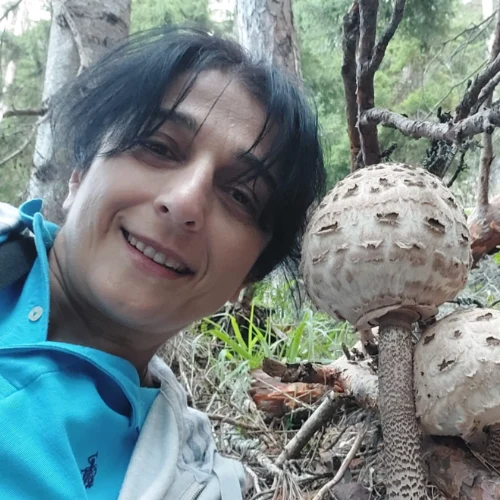
Study of the Mycorrhizal Diversity Associated with Wild Grapevine (Vitis vinifera var. sylvestris) in Georgia
Georgia
2025

Study of the Mycorrhizal Diversity Associated with Wild Grapevine (Vitis vinifera var. sylvestris) in Georgia
Nana Bitsadze
Georgia
Cohort:
2025
project abstract
Wild grapevine (Vitis vinifera var. sylvestris), the ancestor of cultivated grapevine, is distributed across diverse ecosystems of Georgia. These plants form symbiotic associations with arbuscular mycorrhizal fungi (AMF), which enhance nutrient uptake and increase stress tolerance. The diversity of AMF associated with wild grapevine in Georgia has not yet been studied.The project aims to investigate the mycorrhizal diversity of wild grapevine (Vitis vinifera var. sylvestris) in different ecoregions of Georgia using modern molecular biology methods and in collaboration with international colleagues.
Photo by Mike Swigunski on Unsplash

Assessing the Impact of Diverse Land-Uses on Arbuscular Mycorrhizal Communities in the Gulf of Urabá
Urabá, Colombia
2024

Assessing the Impact of Diverse Land-Uses on Arbuscular Mycorrhizal Communities in the Gulf of Urabá
Nancy Johanna Pino Rodríguez
Urabá, Colombia
Cohort:
2024
project abstract
This project aims to investigate how different land uses in the Gulf of Urabá affect arbuscular mycorrhizal fungi (AMF) communities. The region’s diverse landscapes, ranging from mangrove forests to rainforests, face threats from deforestation, agriculture, urbanization, and pollution. By studying these impacts across varied locations—including agricultural zones, urban gardens, and conservation areas—the project seeks to understand the health of microbial communities, soil quality, and vegetation. The goal is to provide insights for sustainable management and conservation strategies. It is hypothesized that AMF diversity and abundance are lower in areas with intensive agriculture and increase toward conservation areas. This suggests a gradient effect where agricultural practices negatively impact beneficial soil fungi while promoting harmful microorganisms. The hypothesis highlights the significance of AMF in soil health and their potential use as bioindicators. The project will promote ecosystem sustainability, biodiversity conservation, and climate change mitigation in the Gulf of Urabá. It aims to enhance local awareness and capacity for sustainable land management through educational initiatives.

Chinchaysuyu kallamp community: Navigating mycorrhizal community stewardship of Biocultural Andes, Chichupampa Clan, Cotacachi, Imbabura, Ecuador
Cotacachi, Imbabura, Ecuador
2024

Chinchaysuyu kallamp community: Navigating mycorrhizal community stewardship of Biocultural Andes, Chichupampa Clan, Cotacachi, Imbabura, Ecuador
Nawi Flores
Cotacachi, Imbabura, Ecuador
Cohort:
2024
project abstract
As an underground explorer, Nkwi aims to pilot an Indigenous R&D governance framework and Indigenous research methodology, elucidating the relationship between the stewardship of native mycorrhizal communities in bioculture-designed Andean agroecology systems and who gets to ask research questions and define research findings. This pilot research is conducted at Kinray Hub, Living Systems Lab, within the Chichupampa Clan territory in the Cotacachi Andes, Imbabura, Ecuador. Through this work, we seek to develop an evolved form of the dichotomies of 'conservation' vs. adaptation and mitigation by strengthening the scientific agency and processes of Indigenous communities to safeguard and improve their bioculture-designed agroecology systems and soil health stewardship, challenging current "hyper-object" creation of "Traditional Ecology Knowledge on Western conservation.
Photo by darlex david on Unsplash

Mycorrhizal Diversity Associated with the Endemic Oak Quercus macdougallii in Oaxaca, Mexico
Oaxaca, México
2024

Mycorrhizal Diversity Associated with the Endemic Oak Quercus macdougallii in Oaxaca, Mexico
Nelly Jazmín Pacheco Cruz
Oaxaca, México
Cohort:
2024
project abstract
This project aims to explore mycorrhizal fungi associated with Quercus macdougallii, an oak species listed as endangered (IUCN Red List). Found exclusively in the Sierra Juárez region of Oaxaca, Mexico, this oak species inhabits an area characterized by high levels of endemism and biodiversity, considered one of Mexico's most preserved areas. Despite its ecological significance, little is known about the fungal communities associated with it. Through comparison of samples from different biogeographic zones and targeting soil adjacent to the oak, we anticipate revealing novel fungal species and their ecological roles within the oak ecosystem, as well as identifying mycorrhizal taxa crucial for the oak's persistence. The project's molecular methodology includes DNA extraction using the DNeasy PowerSoil Pro Kit and sequencing of the ITS region with Illumina's HiSeq platform. This research not only addresses critical knowledge gaps in mycorrhizal ecology but also contributes to conservation efforts. The collaboration between academic institutions such as the National Autonomous University of Mexico (UNAM), the Metropolitan Autonomous University (UAM), and the University of the Sierra Juárez (UNSIJ), along with the local communities (Chinantec and Zapotec communities), underscores the project's interdisciplinary and community-driven approach and enriches the project's societal impact.
Photo by Girl with red hat on Unsplash
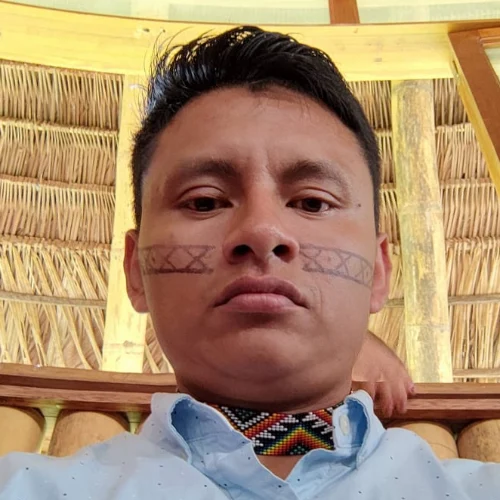
Estudio de la diversidad de hongos micorrízicos en el territorio Sarayaku
Ecuador
2025

Estudio de la diversidad de hongos micorrízicos en el territorio Sarayaku
Nelson Alex Dahua Machoa
Ecuador
Cohort:
2025
project abstract
El estudio de la diversidad de hongos micorrízicos en el territorio Sarayaku, liderado por Nelson Alex Dahua Machoa y financiado por SPUN, abarca 144.000 hectáreas de bosques primarios en la cuenca del río Bobonaza, Pastaza, Ecuador. Este proyecto, enmarcado en la cosmovisión Kawsak Sacha, busca muestrear 60 muestras de suelo para analizar la composición de hongos micorrízicos mediante secuenciación Illumina, amplificando las regiones ITS2 y SSU, en colaboración con la Universidad UFA-ESPE y Scripps Research Institute. La hipótesis plantea que las prácticas tradicionales y la alta biodiversidad vegetal de Sarayaku favorecen comunidades fúngicas más diversas. Se capacitarán tres miembros comunitarios en muestreo de suelos, integrando saberes indígenas y científicos. Los resultados fortalecerán la conservación del ecosistema, la fertilidad del suelo y prácticas agroforestales sostenibles, además de generar una publicación científica. El proyecto incluye charlas educativas, materiales bilingües (español-kichwa) y capacitaciones en monitoreo ambiental para las siete comunidades de Sarayaku, promoviendo la soberanía territorial y la resiliencia frente al cambio climático.

Conservation of the arbuscular mycorrhizal fungi associated with at risk native Hawaiian dryland forests
Hawaii, USA
2023

Conservation of the arbuscular mycorrhizal fungi associated with at risk native Hawaiian dryland forests
Nicole Hynson
Hawaii, USA
Cohort:
2023
project abstract
The focus of this study are the arbuscular mycorrhizal (AM) fungi associated with what is considered by many, the most endangered tropical ecosystem: native Hawaiian dryland forests. These forests have been negatively impacted by land conversion, invasive species and climate change including drought and increased fire frequency. These impacts have reduced the current extent of native dryland forests to 5-10% of their historic range. Hawaii is infamously known as the endangered species capitol of the world and more than 25% of Hawaii's endangered species are found in these forests, but only 3% of the remaining forests are considered healthy. Dryland forests also hold deep cultural significance for Native Hawaiians. Active restoration efforts are underway to preserve and restore these ecosystems, but to date there has been no assessment of the mycorrhizal fungal communities associated with dryland forest native host plants including many endangered and endemic species, the majority of which should partner with AM fungi. The goals of this project include: 1) cataloging the diversity of AM fungi found across the Hawaiian archipelago in the last remaining native dryland forests and, 2) cultivating and preserving AM fungi for native vegetation inoculation trials and restoration projects.
Photo by Karsten Winegeart on Unsplash

Soil fungal diversity in dry shrublands of the Persian Gulf: Mainland vs Island
Hormozgan province, Iran
2024

Soil fungal diversity in dry shrublands of the Persian Gulf: Mainland vs Island
Niloufar Hagh Doust
Hormozgan province, Iran
Cohort:
2024
project abstract
The diversity of soil microbiomes, particularly mycorrhizal fungi, remains inadequately studied in the southern regions of Iran. This area holds significant ecological value beyond its terrestrial ecosystems, functioning as an ecoregion that connects the Zagros Mountains and central deserts of Iran to the Persian Gulf. It features unique habitats, such as mangrove forests, which contribute to its ecological significance. The diverse habitat types within this ecoregion render it an intriguing landscape and present an excellent opportunity to test various ecological hypotheses. This project aims to investigate the soil fungal diversity in mainland dry shrublands compared to the fungal communities found on the Persian Gulf islands. The data collected will enhance our understanding of soil biodiversity in arid and semi-arid regions. It is imperative to study and consider the rare and unique ecological communities of island ecosystems in comprehensive regional conservation and restoration plans to prevent their loss. Examining the soil fungal diversity of the largest island in the Persian Gulf and comparing it to the mainland is crucial for improving the sustainability of these fragile ecosystems. Moreover, characterizing the soil communities in unexplored areas and ecoregions will enhance our ability to predict the loss of soil biodiversity under climate change.
Photo by mostafa world on Unsplash
The soil mycobiome at the tree line of Manu National Park, Cusco, Peru
Parque Nacional del Manu, Cusco, Perú
2023

The soil mycobiome at the tree line of Manu National Park, Cusco, Peru
Norma Salinas
Parque Nacional del Manu, Cusco, Perú
Cohort:
2023
project abstract
Across terrestrial plant species, symbiotic relationships between fungi and roots is common. Various mycorrhizal types prevail in distinct biomes, with arbuscular mycorrhizae colonization contingent upon evolutionary and ecological constraints. Peru boasts a wealth of endemic flora and fauna, nestled within the globally recognized biodiversity hotspot of the "Tropical Andes." Within the Peruvian Andes lie the Puna grasslands and montane forests, constituting the Puna-timberline ecotone, which serve as habitats for endemic plant and animal species and harbor hidden underground biodiversity. Our SPUN project aims to highlight these regions as potential biodiversity hotspots for mycorrhizal fungi while recognizing them as some of the most uncharted territories for soil fungi research. We anticipate observing distinct fungal communities, particularly ectomycorrhizal, with a marked diversity turnover pattern across the three ecosystems: forests, ecotones, and grasslands.
Photo by Willian Justen de Vasconcellos on Unsplash

Soil mycobiome diversity and composition in Cacao plantations under different management regimes in Ivory Coast (West Africa)
IVORY COAST
2022

Soil mycobiome diversity and composition in Cacao plantations under different management regimes in Ivory Coast (West Africa)
Nourou S. Yorou
IVORY COAST
Cohort:
2022
project abstract
The project aims at producing high quality data on the diversity and abondance of soil mycobiome in Cacao plantations of Ivory Coast. Ivory Coast (West African) is the largest cocoa (Theobroma cacao) producer in the world with three production regions (East, Centre-Western, and the South-Western). Cacao plantation are subject to different management regimes, including agroforestry systems in the vicinity of natural dense forests. We hypothesized that plantations under long term management regime (old plantations) have an altered structure of soil mycobiome that has led to a decrease in the diversity of soil fungi. Three different management regimes (+ natural forests) from four sites of the ongoing CacaoSAF project (Alliance Bioversity - CIAT), will be considered. At each of the 14 sampling sites, composite soil cores and fine roots will be sampled from a total of 10 cacao trees and from most dominant tree in the dense forests. Mycorrhizal dependence and AMF spores’ identification and density will be performed at the University of Parakou in Benin. Doubled of soil samples will be shipped to the Swedish Agricultural University for metabarcoding (NGS). Semi-structured interviews will be conducted with the farmers of the CacaoSAF tool project to collect information about the age of the plantation, the management regime, productivity over time and the natural forest. For each sample we will fill the metadata form. At the end of the project, the farmers of the CacaoSAF project can appreciate how their management practices affect soil mycobiome. Partner scientists from the Institute National Polytechnique Félix Houphouët-Boigny will benefit from molecular data and the identification of AMF of the cocoa trees in Ivory Coast. We expect to generate at least one paper in peer-reviewed applied ecological journal or in organisms’ diversity journals. Generated sequence data will be shared with the CacaoSAF tool developed by the Alliance Bioversity-CIAT, as well as on international accessible platforms.

The diversity of arbuscular mycorrhiza along the transformation rainforest to managed ecosystems in Central Sulawesi Indonesia
Central Sulawesi, Indonesia
2024

The diversity of arbuscular mycorrhiza along the transformation rainforest to managed ecosystems in Central Sulawesi Indonesia
Nur Edy
Central Sulawesi, Indonesia
Cohort:
2024
project abstract
In Indonesian Wallace, one of the most significant ecoregions in Southeast Asia and the world, the largest land area is Central Sulawesi. It has unique species and species that exist in Asian and Australasian origin. On the other hand, Central Sulawesi is also designated as a national strategic area, especially for nickel and gold mining, which contradicts the conservation of the below and above grounds. Long studies have been reported that arbuscular mycorrhizal fungi (AMF) as a plant roots associate that contributes to the land and vegetation conservations. However, more basic biological information needs to be known related to the functional diversity of AMF. This study will investigate the AMF diversity in rainforests and its transformation ecosystems: monoculture plantation and mixed agricultural ecosystems. Also, the study will assess the AMF diversity in agricultural ecosystems close to the nickel mining area and replanted ex-mining area. The hypothesis proposes that an intensified production of cash crops and mining causes a decrease in AMF diversity. Soil samples collected from the study sites will be the sources of the DNA. The AMF genomic DNA will be extracted from the soil and then used as a DNA template for PCR and DNA sequencing. The DNA also will be extracted from the single spore of AMF. For this part, the morphological spore characteristics will surely be named after the DNA sequencing from the AMF spore. The expedition will be in a team consisting of the main researcher, collaborators, students, local people, and the ranger of the forest authority. This study, will contribute to the national and global databased related to AMF diversity along the transformation of rainforest to managed ecosystems.
Photo by Ayu Putri D on Unsplash

Exploring underground biodiversity of Humid Suptropical forests and savannas of Argentina: impacts of land use change and conservation efforts
Northeast Argentina
2024

Exploring underground biodiversity of Humid Suptropical forests and savannas of Argentina: impacts of land use change and conservation efforts
Pablo Adrián García-Parisi
Northeast Argentina
Cohort:
2024
project abstract
The Humid-Subtropical Region of north-east Argentina is a mosaic of diverse biomes, including subtropical grasslands, savannas, shrublands, flooding grasslands, and moist forests. This region features ecoregions such as the Humid Chaco, Mesopotamian Savanna, Paraná Flooded Savanna, and the biodiverse Misiones Jungle and Araucaria Mist Forest. These areas are home to local producers and indigenous communities engaged in agriculture and livestock farming. Despite the ecological and cultural significance, these ecoregions face pressures from land conversion for agriculture, livestock, and forestry. This project aims to understand the impact of replacing native vegetation with various production systems on mycorrhizal fungi diversity. We will compare pure forest systems, natural grasslands, sown pastures grazed by cattle, and mixed systems combining forestry and cattle against pristine areas representative of each ecoregion. By comparing diverse productive systems to pristine sites, we seek to reveal the intricate relationships between land use, biodiversity, and ecosystem services, particularly in these understudied subtropical regions. The project outcome will guide land-management practices that preserve biodiversity while supporting agricultural and forestry productivity. Understanding these dynamics is crucial for balancing conservation with food production in this vital region of South America.
Photo by Dámaris Azócar on Unsplash

Fire and nurse plants in the sclerophyllous forest of Chilean Matorral: How do they affect the diversity of arbuscular mycorrhizal fungi?
Chilean Matorral, Central Chile
2023

Fire and nurse plants in the sclerophyllous forest of Chilean Matorral: How do they affect the diversity of arbuscular mycorrhizal fungi?
Patricia Silva Flores
Chilean Matorral, Central Chile
Cohort:
2023
project abstract
The Chilean Matorral has a high degree of plant endemism and a high vulnerability due to anthropogenic pressures, mainly anthropogenic fires, which is why it is currently recognized as a biodiversity hotspot. There is evidence that fire can reduce the richness and abundance of microorganisms in the soil, including mycorrhizal fungi, thus modifying their diversity. On the other hand, there is evidence that after a fire it is possible to find trees that survive and are able to resprout, so they function as nurse plants and can in turn be a source of mycorrhizal fungi for a potential recovery of the affected system. That said, in this study we aim to test the effect of fire and nurse plants on the diversity of arbuscular mycorrhizal fungi in the sclerophyllous forest. This forest is the most representative vegetation formation of the Chilean Matorral and the dominant plant species present there form arbuscular mycorrhiza. A lower diversity of arbuscular mycorrhizal fungi is expected in sites affected by fires and without the presence of nurse plants compared to sites not affected by fires and with the presence of resprouting nurse plants. This project includes work with local communities in order to transfer knowledge among all participants.
Photo by Diego Jimenez on Unsplash
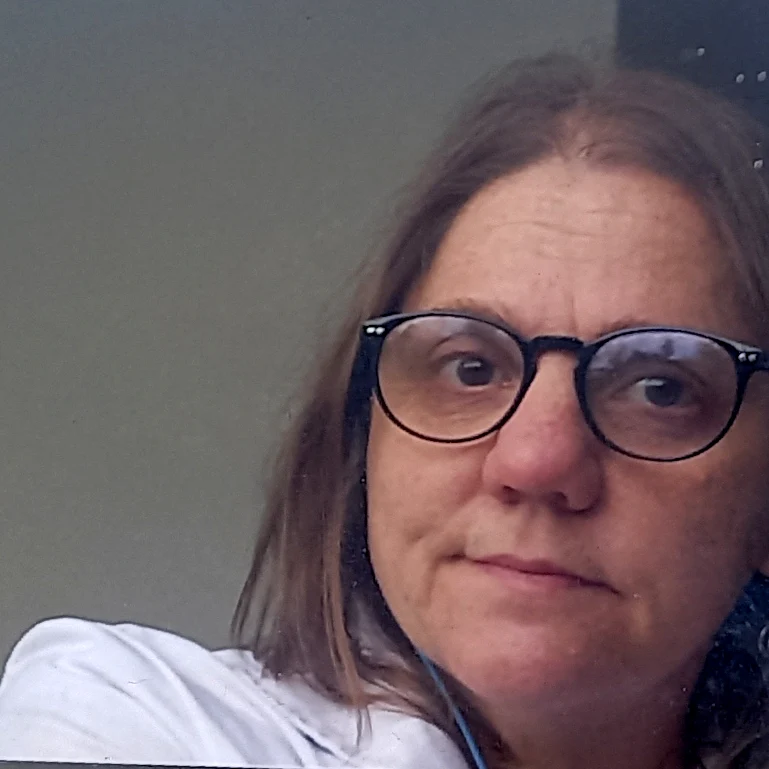
Unravelling underground interactions in a natural successional experiment
Uruguay
2025

Unravelling underground interactions in a natural successional experiment
Patricia Vaz Jauri
Uruguay
Cohort:
2025
project abstract
The study site is located in a split structure within the fluvial wetland of the Rio Uruguay, the largest of its kind in Uruguay. The site offers a natural experiment for studying vegetation succession, with three areas at clearly defined stages: mature, intermediate, and neoformation, progressing from north to south. Although the ecosystem holds significant conservation value, it faces serious threats from the invasive legume Gleditsia triacanthos, which is displacing native species in parts of the riparian forest. In Uruguay, Gleditsia triacanthos is recognized as one of the two most invasive woody species, posing a significant threat to native forests due to its ability to outcompete and replace native vegetation. Soil microbial communities play key roles in plant health and establishment, thus, we aim to investigate how this invasive species interacts with the soil microbial community and how this interaction differs from that of native species. This site presents an opportunity to enhance our understanding of the relationship between a non-native invasive species and the native microbial community within the framework of ecological succession.
Photo by Alex Teixeira on Unsplash

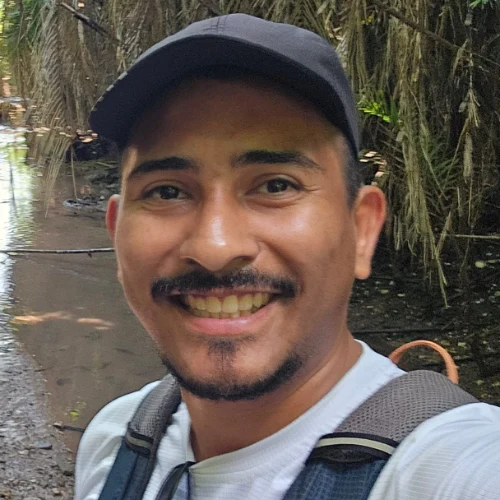
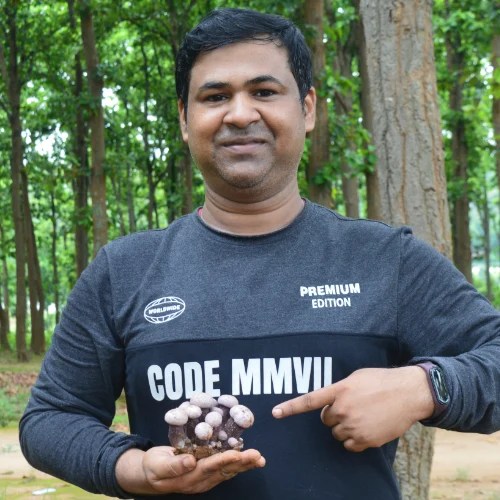
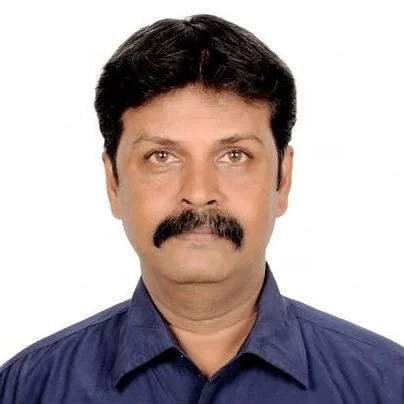
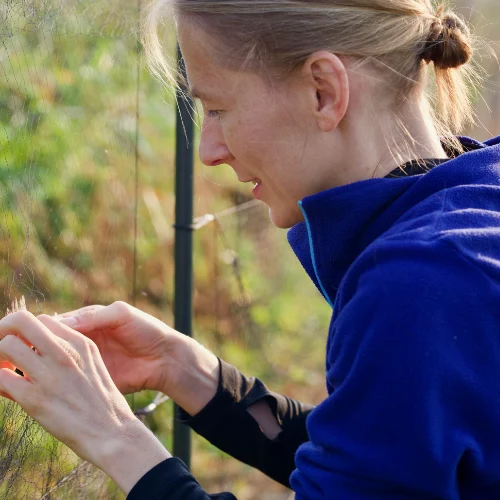

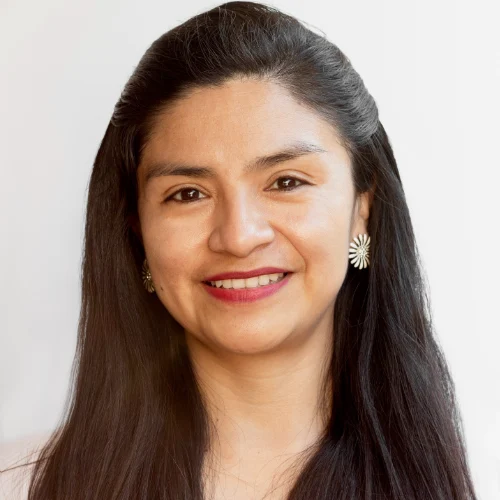

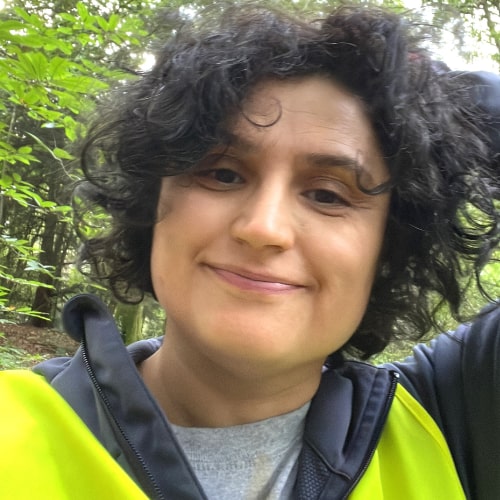
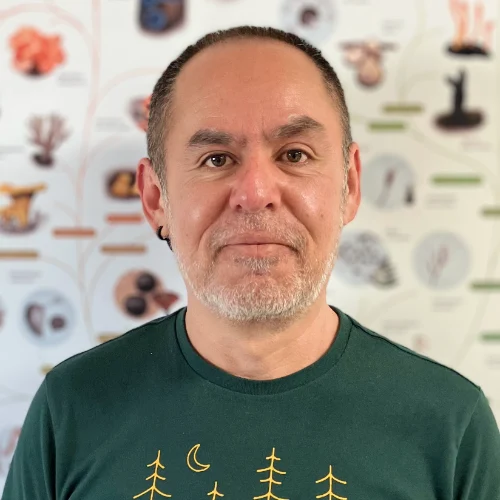

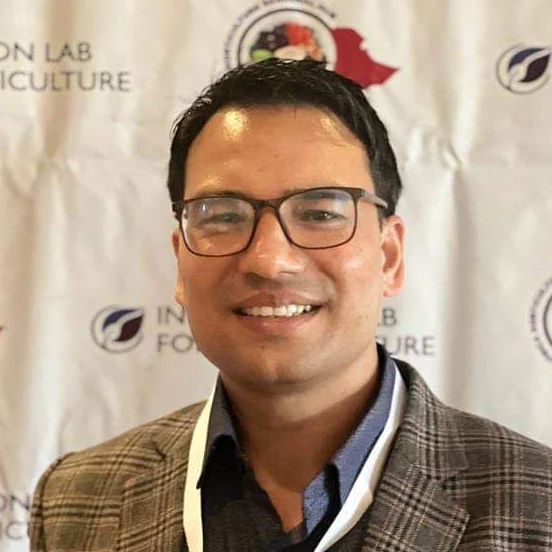
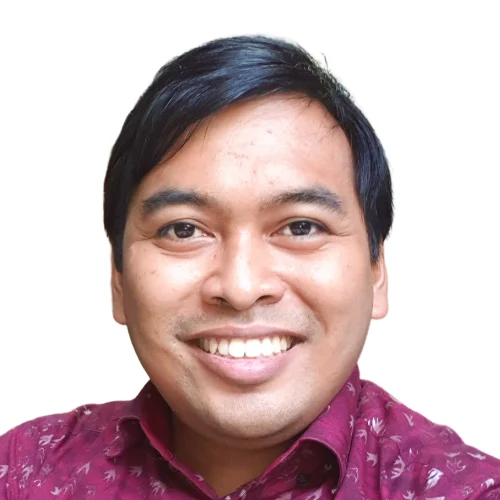
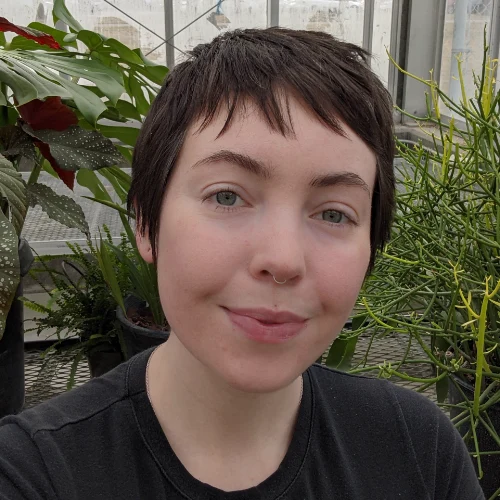
.jpg)

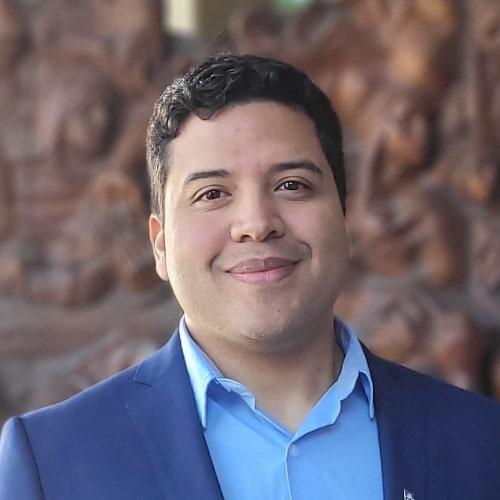




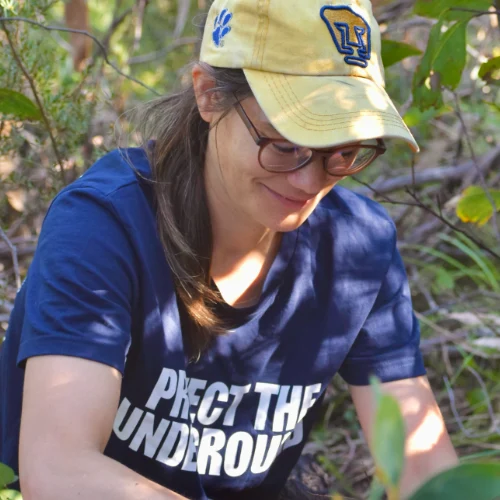

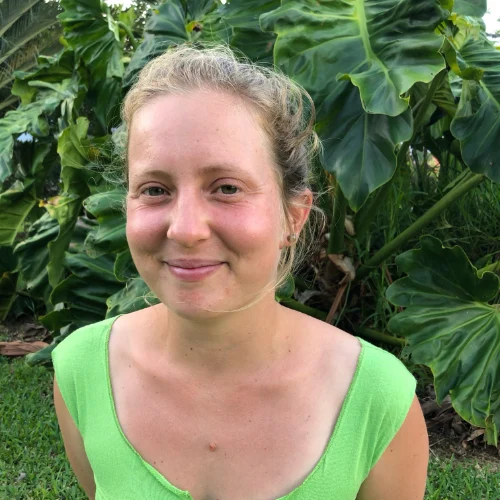
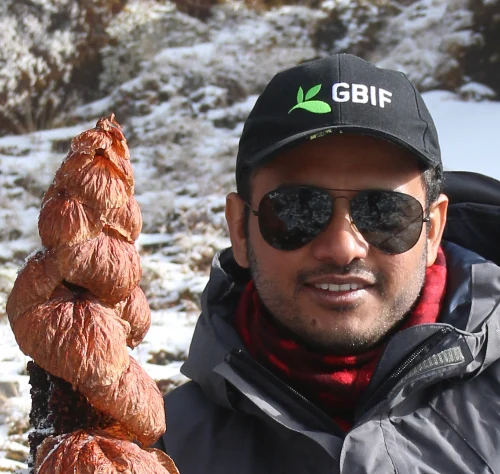
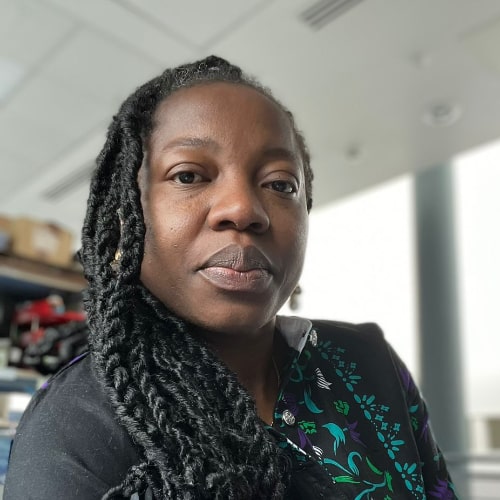







.jpg)


























